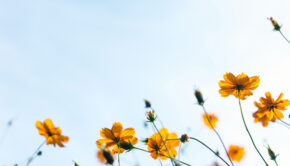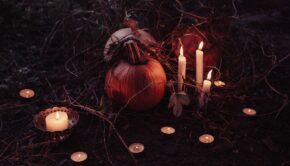Tree of Knowledge, Tree of Life
My work at Organic Torah starts with asking a question about chochma/Jewish wisdom: Must the Tree of Knowledge be separated from the Tree of Life?
The Tree of Knowledge is what we have become used to in much of our Western education—it begins with breaking things apart into smallest components. Our education system is divided into discreet subjects: math, science, English—too often devoid of context and the vibrancy which comes from what Gregory Bateson called “the pattern which connects.” And if we go to college or grad school we might study a “discipline” like chemistry or history or economics. We are taught to be objective, and separate our emotions from our intellect.
This type of knowledge has been very successful in creating the modern world, curing diseases and building incredible technology, but it has also separated us from a sense of kinship with (and responsibility for) the natural world. It has us thinking of ourselves as free floating individual units, “rational economic actors.” It even affects our relationship with our own bodies.
This type of knowledge has also marginalized and misunderstood Jewish wisdom (chochma). For example, the Talmudic unit we translate as “Tractate” (a Latin word related to the idea of extending) is masekhet a Hebrew word meaning a weave. The Talmud, Midrash and so many classic Jewish texts are organically woven, not linearly extended in a straight line. To the modern eye they can look like they need an editor—meandering, or worse—primitive nonsense.
Yet, as this reductionist way of thinking (and being) has contributed to environmental, social, economic and political crises, the contemporary world has started to correct the imbalance and swing back towards more relational, non-hierarchical and contextual ways of understanding. Systems thinking, ecology, complexity and other fields reveal a turn in modern thinking toward a way of understanding that is much more in sync with the organic quality of Jewish wisdom.
Organic Torah is about seizing this moment and integrating our ancient wisdom with the cutting edge of modern, scientific thought. When we do so, Jewish wisdom—Torah in its broadest definition— becomes accessible and attractive to modern, educated people. Through classes, workshops, publications and conferences, Organic Torah works to focus on this amazing opportunity to bring the Tree of Knowledge together with the Tree of Life.
Organic Torah makes contributions to all of the areas mentioned in Sid Schwarz’s essay. (Note: This essay was originally written in response to Rabbi Sid Schwarz’s Introduction essay in his book Jewish Megatrends). In chochma/wisdom, we emphasize the ways in which Jewish texts and modes of thought can be understood in terms of patterns, juxtapositions, and networks of meaning. We take our inspiration from a midrash about Ben Azzai, who was learning and his fellow students noticed there was fire all around him. When his teacher, Rabbi Akiva asked him whether he was delving into forbidden mystical practices, he said, “No, I’m simply stringing words of Torah like pearls to the words of the Prophets and from the words of the Prophets to the words of the Writings, and the words are as happy as on the day they were given on Mount Sinai.” In other words, by creating new juxtaposition, new contexts and relationships, Ben Azzai was re-kindling the fire of Torah, as if in a new revelation.
At Organic Torah we also string pearls by juxtaposing the words of Jewish wisdom with modern examples of ecological and systems thinking, creating new midrashim for our times. We pair, for example, Ben Azzai with Wendell Berry, Psalms with Michael Pollan, and Rabbi Yehuda with Malcolm Gladwell.
At the core of our modern midrashim are three principles which connect Jewish wisdom with systems thinking. I call these the three mems: minyan, mikdash, and mitzvah. Minyan stands for the principle of emergence. When we get together in community, or when we connect texts with one another, there is an added “something” that emerges: the whole is greater than the sum of its parts.
Mikdash stands for nestedness – like a cell is nested within an organ, within a body, within a family—the ancient Temple consisted of a Holy of Holies, inside a Temple, inside a court, inside Jerusalem. This principle of nestedness reminds us that we have multiple identities. It’s not an either/or dilemma, but a both/and set of options: we are individuals, part of a people, part of a country, part of humanity, part of the created world.
Finally, mitzvah stands for the idea that small actions can make a huge difference. Pirkei Avot said, “Be diligent in a small mitzvah as with a large one—you never know the reward of a mitzvah.” Whether it’s recycling, calling our senator, turning off our devices for Shabbat, or giving tzedakah—we do our small actions because—you never know—they could be the “tipping point” and change everything.
Rav Kook said that we must “make the old new and the new holy.” By connecting the leading edge of Western thinking—systems thought, ecological thinking—with an inspiring vision of ancient Jewish wisdom, Organic Torah helps to bring that sense of holiness (kedusha) to our learning: pointing us toward those approaches which bring the Torah alive with its patterns and new juxtapositions—and in our social world by shifting our consciousness toward connectedness and a sense of belonging.
Starting with a sense of holiness/kedusha in our approach to chochma/wisdom, kehilla/community, and tzedek/justice are also woven into Organic Torah’s mission. Beyond intellectual knowledge, Organic Torah is about shifting our way of being in the world. When we learn to see relationships as prior to things, to see ourselves as parts of a greater whole, we give community back its rightful role, and we take responsibility for those around us—humans and non-humans.
By showing how the very structure of Torah/chochma is in sync with the organic patterns of life, we make a uniquely Jewish contribution to healing our human relationship with the natural world, with our communities and with society. Countering a culture of separation with a culture of connection, we plant seedlings of the Tree of Life.
Read the original Kenissa post here.







One Response to Tree of Knowledge, Tree of Life